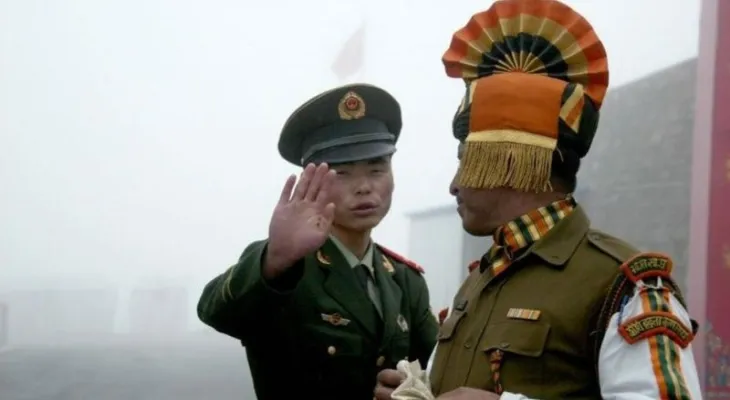Search here
Newspaper
Search here

Arab Canada News
News

Published: September 6, 2023
India and China, the two most populous countries in the world, and home to the largest armies and nuclear arsenals, have been in conflict in the border region of the Himalayas for weeks.
However, the crisis escalated on Tuesday, with the Indian army stating that three of its soldiers, including a colonel, were killed in hand-to-hand combat with Chinese forces.
Indian media reported late Tuesday that 20 army personnel were killed and "43 injuries occurred among the Chinese."
China has not yet confirmed the number of its casualties and injuries.
These are the first casualties in this ongoing dispute that has lasted for more than four decades over the border region between the two Asian giants.
Accumulating Tensions
The site where the clashes occurred represents the de facto border, not agreed upon by the two countries, and is known as the Line of Actual Control in the Galwan Valley in the Indian state of Ladakh on the Tibetan Plateau.
This region is located in the disputed Kashmir area, which is heavily militarized and a source of disputes between India, Pakistan, and China due to sovereignty disagreements over its territories.
A map showing the location of the Galwan Valley in Asia
The Galwan Valley has been the scene of numerous incidents between Chinese and Indian patrols; since April, both sides have deployed tanks, artillery, rockets, and military troops around the valley.
The ground forces have been supported by attack helicopters and fighter jets.
In early May, tensions escalated after Indian media reported that Chinese forces had dug positions, pitched tents, and moved heavy military equipment several kilometers into the area that India considers part of its territory.
This move followed India's construction of a road extending several hundred kilometers to reach an airbase located at a high altitude that was reactivated in 2008.
In light of the recent tensions, India blamed China for the deterioration of the situation, stating: "During the ongoing de-escalation process in the Galwan Valley, a violent confrontation occurred last night resulting in injuries on both sides," according to an Indian army statement.
For its part, China urged India "not to take unilateral actions or create problems," and Chinese Foreign Ministry spokesperson Zhao Lijian stated that India was the one who crossed the border, "provoking and attacking Chinese personnel, which caused a direct confrontation between the border guard forces on both sides."
What is the background of the conflict?
Several factors have led to this confrontation, but conflicting strategic objectives on both sides lie at its roots.
This picturesque lake, located at an altitude of 4250 meters, is one of the disputed areas between the two Asian giants.
India and China share a border that extends for 3,440 kilometers, across which areas overlap in their claims of sovereignty.
Since the 1950s, China has refused to recognize the borders drawn during the British colonial era. This led to a fierce war between the two countries in 1962, which ended with a severe defeat for the Indian army.
Contradictory Narratives
Since that war, India and China have been blaming each other for occupying territories belonging to one another.
India claims that China occupies an area of 38,000 square kilometers of its territory, located in the region where the recent clashes occurred.
Meanwhile, China claims the entirety of Arunachal Pradesh, which it calls southern Tibet. In addition, there are many other sectors where the two countries have differing views about the dividing borders.
The poorly demarcated border, or what is known as the Line of Actual Control, in Ladakh features numerous rivers, lakes, and snow-capped peaks, meaning that the lines separating the soldiers of both countries can change, often bringing matters to the brink of confrontation.
Many rounds of negotiations between the two countries over the past three decades have failed to resolve the border dispute, but these rounds have also helped maintain some degree of stability in the region.
Infrastructure
To deploy forces in such a volatile area, both sides are building infrastructure to extend railways and roads, with India attempting to catch up with the Chinese side in this regard.
Under the leadership of Narendra Modi, India has begun building dozens of roads along the border (Line of Actual Control) and is racing to complete all of these projects by the scheduled deadline in December 2022.
China has also built roads and infrastructure in the region, which are considered important strategic projects for Beijing as they connect the Xinjiang province (Sinkiang) with western Tibet.
Comments